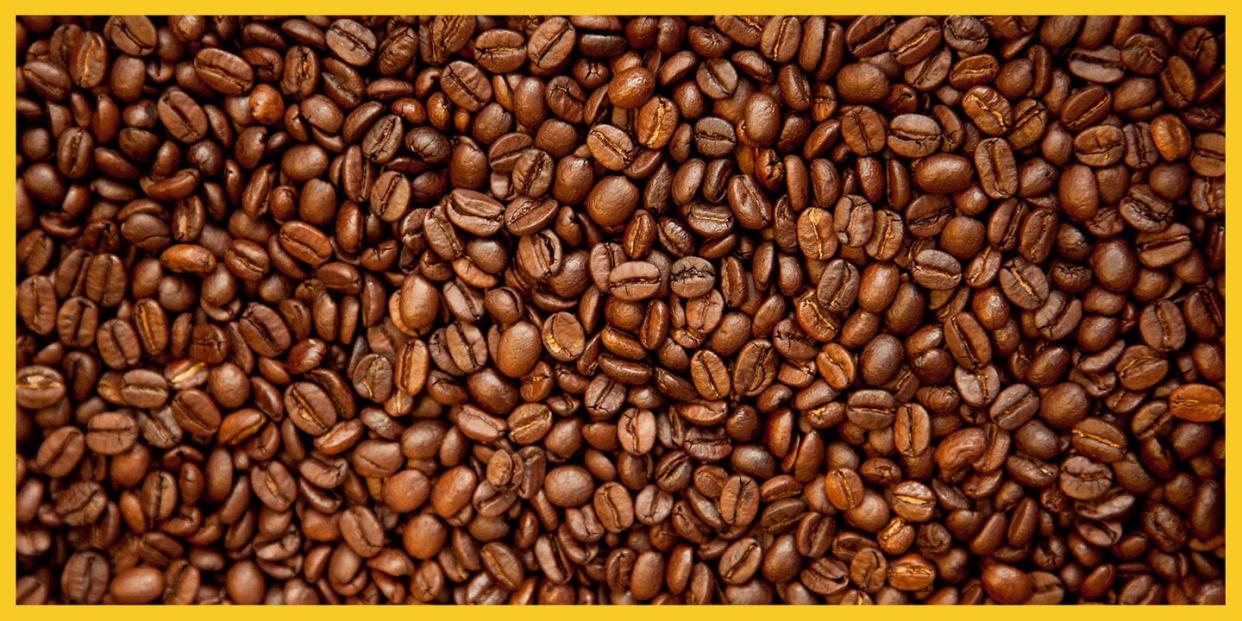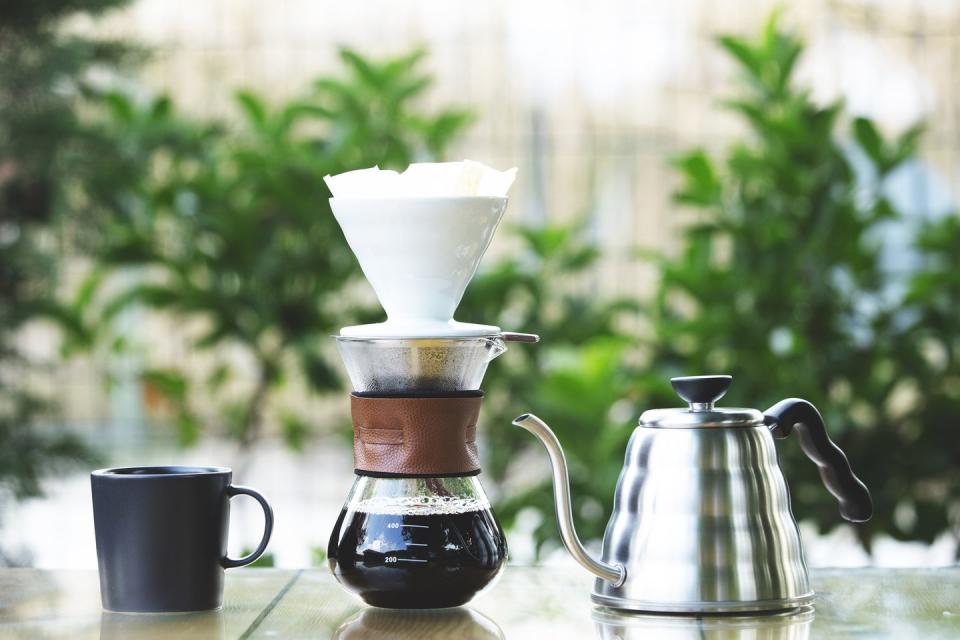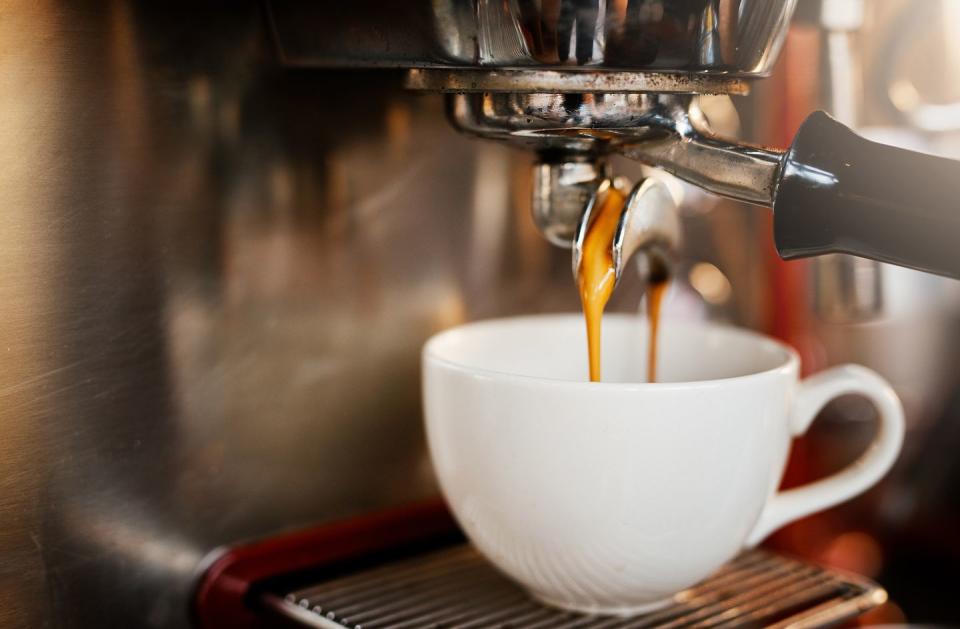What's The Difference Between Coffee And Espresso?

"Hearst Magazines and Yahoo may earn commission or revenue on some items through the links below."
Have you ever walked into a coffee shop and wondered about the difference between coffee and espresso? We're here to help.
The basics are pretty simple to understand. "Espresso and coffee are one in the same," said Bri Jones, coffee educator at Partners Coffee Roasters in New York.
The key difference is the method in which the beans are brewed. "Espresso, pour over, drip, or French press simply refer to different ways of brewing coffee," Jones said. And the brewing method and coffee beans you use will determine the flavor and texture profile of the drink. In this story, we'll break all that down with the help of our coffee-expert friends.
What Is Coffee?

When we think of coffee, we often think of the liquid produced from a drip coffee maker, French press, or pour over. Drip coffee, the most common type at coffee shops, is brewed using a 1:15 to 1:20 coffee-to-water ratio, according to Kaleena Teoh, co-founder of Coffee Project New York. This gives coffee a higher yield compared to espresso. "Drip coffee is definitely lighter in body and more diluted in comparison to espresso," said Teoh.
What Is Espresso?

Espresso is all about speed and pressure. "Espresso is a specific brewing method that uses highly pressurized water and finely ground beans to create a concentrated shot of coffee," said Jones. Brewing espresso requires a 1:1.5 to 1:2.5 ratio of coffee to water. Espresso is made more quickly than coffee, and brews in a just a few seconds, according to Teoh.
"Espresso is usually more syrupy in texture but very intense in flavor," she added. This concentrated flavor lends itself well to being mixed with milk to make cappuccinos and lattes. It's also why espresso is great in an espresso martini or drizzled over ice cream for an affogato. We even like to add espresso to cookies.
The Differences Between Coffee And Espresso
Aside from the obvious differences of strength and volume, there are more subtle characteristics that differentiate them too.
Paper filters are used in drip and pour over brew methods, which remove oils in roasted coffee and results in a more delicate body and clear flavor, according to Jones. "Whereas the stainless steel filters in an espresso machine allow for more of these oils to pass through, to create a heavier viscous body and frothy top layer of crema," she said.
"People are usually better at telling profile differences in drip coffee than espresso because it is more diluted," said Teoh, who compares it to tasting whiskey. "If you add water/ice to a neat cup of whiskey, the profiles open up a little more."
Can You Use The Same Beans For Coffee And Espresso?
"Believe it or not, you can use the same bean for both brewing method," said Teoh. Some roasters, however, roast coffee beans specifically for espresso, which is typically a darker roast.
"A darker roast is more soluble in hot water, and given that the espresso brewing method is completed in seconds rather than minutes, we need to make sure that we are able to balance the extraction by using a more soluble coffee," she added.
On the other hand, she said that a light or medium roast might be preferred for drip coffee because it allows you to taste the original bean profile, which varies based on its origin and how it was processed. "If it is roasted too dark, the fruity, floral, delicate profile will be covered up by a smoky and ashy profile," she said.
You Might Also Like

